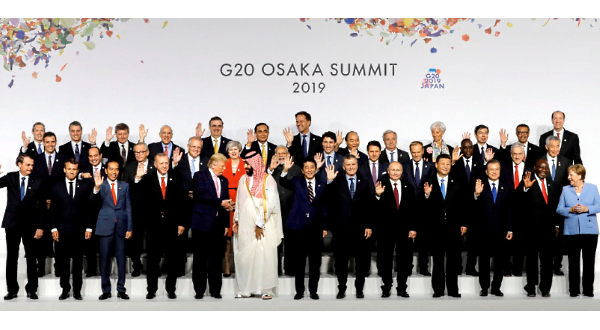A new research by the World Resources Institute (WRI) and Climate Analytics shows that G20 countries, which account for around 75% of global greenhouse gas emissions, can get the world a large part of the way towards that target – if they greatly increase their ambition.

Countries’ current climate plans – including 2030 emissions-reduction pledges (known as Nationally Determined Contributions – NDCs) and legally binding net-zero targets – will only limit warming to 2.4 degrees C (4.32 degrees F) by 2100, setting the world up for increasingly severe wildfires, droughts, floods and more. If G20 countries fully enact the additional targets they’ve announced but not yet formally adopted, temperature rise could be limited to 2.1 degrees C (3.78 degrees F).
The paper finds that if all G20 countries set ambitious 2030 emissions-reduction targets and commit to reach net-zero emissions by mid-century, global temperature rise could be limited to 1.7 degrees C (3.06 degrees F) in 2100, keeping the 1.5-degree C goal within reach.
Specifically, the paper models the effect on global temperature if – in addition to existing pledges – developed countries set net-zero greenhouse gas emissions targets by 2050, developing countries set net-zero carbon dioxide emissions targets by 2050, and all G20 countries align their 2030 emissions-reduction targets with global, cost-effective pathways that limit warming to 1.5 degrees C.
This analysis underscores how essential it is for G20 nations to step up their climate action commitments ahead of the UN climate summit (COP26) in November 2021.
The extreme weather events seen today – like record-breaking heat and wildfires in the U.S., Canada and Russia, and severe flooding in Europe and China – are taking place with warming of just 1.1 degrees C (1.98 degrees F) above pre-industrial levels.
Keeping temperature rise to 1.5 degrees C will not stop these extreme weather events, but will avoid more dangerous climate impacts under higher temperatures. Breaching 1.5 degrees C would put millions of people at a much higher risk of life-threatening heatwaves, floods, droughts and poverty. Every fraction of a degree matters when it comes to the severity of climate impacts.
Several G20 countries have submitted enhanced NDCs that narrow the gap to 1.5 degrees C. To date, Argentina, Canada, the European Union, and U.S. have all set 2030 emissions-reduction targets that are stronger than their previous NDCs submitted in 2015, though they’re not yet fully 1.5 degrees C-aligned. The UK set a 2030 target in the 1.5-degrees-C-compatible range.
Japan, South Africa and South Korea announced their intention to enhance their 2030 emissions-reduction targets by COP26, but have not yet formally communicated them to the UN.
China, India, Saudi Arabia and Turkey have yet to submit updated 2030 NDCs at all.
Other countries, including Australia and Indonesia, submitted climate plans that maintained the same level of emissions in 2030 as their 2015 NDCs. Russia’s updated NDC is marginally stronger than its previous one, but still allows emissions in 2030 to be higher than where they are projected to be under the country’s current policies.
In the same vein, Brazil and Mexico submitted updated NDCs with 2030 emissions targets that would allow higher emissions than what they had committed to in previous NDCs.
Moreover, the report notes that while many of the net-zero targets set by some G20 countries have helped lower projected temperature levels, they require very steep emissions cuts from 2030 levels to achieve net-zero emissions by mid-century. In many cases, these steep reductions are challenging or simply beyond what global models consider to be feasible. The G20 will need to rapidly cut emissions in the 2020s to improve the credibility of their net-zero targets.
What should major economies do now?
Just this month, a global survey found that 74% of people in G20 nations support the idea that their country’s economic priorities “move beyond profit and increasing wealth and focus more on human wellbeing and ecological protection.” The research shows the pivotal role that the G20 can play in safeguarding our future and keeping global temperature rise to safe levels. What the world requires now is bold leadership from the G20 to get us on a safe, climate-resilient path.
The upcoming UN General Assembly, G20 Summit in Rome in October 2021 and COP26 in November 2021 present critical opportunities. Actions G20 countries should take before then include:
- Submit NDCs that significantly deepen emissions reductions for 2030;
- Commit to mid-century net-zero targets and ensure their 2030 targets align with longer-term goals; and,
- Step up public climate finance pledges (by developed countries) and mobilise private finance.
It is still possible to limit global temperature rise to 1.5 degrees C, but that window is closing fast. G20 countries must step up to keep that window open and secure a safer future for us all.
By Jamal Srouji, Taryn Fransen and David Waskow
